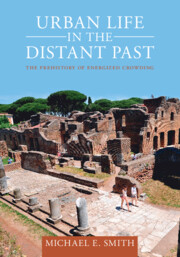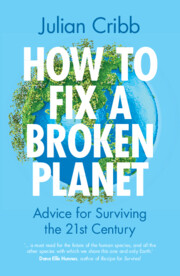246 results
9 - Birth Control and Reproductive Rights in the Modern World
-
-
- Book:
- The Cambridge World History of Sexualities
- Published online:
- 26 April 2024
- Print publication:
- 16 May 2024, pp 183-203
-
- Chapter
- Export citation
Vulnerability, Preparedness, and Previous Experience of Disasters Among the Population of a High Hazard Region—Rural Southern Sindh, Pakistan
-
- Journal:
- Disaster Medicine and Public Health Preparedness / Volume 18 / 2024
- Published online by Cambridge University Press:
- 16 April 2024, e69
-
- Article
-
- You have access
- Open access
- HTML
- Export citation
2 - Origins
-
- Book:
- China's Age of Abundance
- Published online:
- 28 March 2024
- Print publication:
- 04 April 2024, pp 28-57
-
- Chapter
- Export citation
1 - The importance of health and wellbeing
- from Part 1 - Context
-
-
- Book:
- Health and Wellbeing in Childhood
- Published online:
- 08 March 2024
- Print publication:
- 04 March 2024, pp 3-17
-
- Chapter
- Export citation
3 - Population, 1000–1500
- from Section II - The Medieval Economy, 1000–1500
-
-
- Book:
- An Economic History of the Iberian Peninsula, 700–2000
- Published online:
- 22 February 2024
- Print publication:
- 29 February 2024, pp 76-101
-
- Chapter
- Export citation
4 - Maritime Resurgence and the Rise of Dai Viet
-
- Book:
- A Maritime Vietnam
- Published online:
- 12 January 2024
- Print publication:
- 01 February 2024, pp 110-139
-
- Chapter
- Export citation
Novel recruitment approaches and operational results for a statewide population Cohort for cancer research: The Healthy Oregon Project
-
- Journal:
- Journal of Clinical and Translational Science / Volume 8 / Issue 1 / 2024
- Published online by Cambridge University Press:
- 19 January 2024, e32
-
- Article
-
- You have access
- Open access
- HTML
- Export citation
2 - Global Trends
- from Part I - Introduction and Global Trends
-
- Book:
- Dynamic Sustainability
- Published online:
- 07 December 2023
- Print publication:
- 21 December 2023, pp 15-29
-
- Chapter
- Export citation
1 - The Global Economy
- from Part I - Introduction
-
- Book:
- International Economics and Business
- Published online:
- 21 December 2023
- Print publication:
- 21 December 2023, pp 3-40
-
- Chapter
- Export citation
Estimating the ‘Missing’ Houses of Silchester
-
- Article
-
- You have access
- Open access
- HTML
- Export citation
Vulnerability of wilderness areas to day-use visits
-
- Journal:
- Environmental Conservation / Volume 51 / Issue 1 / March 2024
- Published online by Cambridge University Press:
- 19 October 2023, pp. 36-44
-
- Article
-
- You have access
- Open access
- HTML
- Export citation
1 - Continuities in China’s Pacific Asian Centrality
-
- Book:
- Recentering Pacific Asia
- Published online:
- 03 August 2023
- Print publication:
- 17 August 2023, pp 23-44
-
- Chapter
- Export citation
Polity Size Matters? The Effect of Country Size on Politicians' Professionalization
-
- Journal:
- Government and Opposition / Volume 59 / Issue 2 / April 2024
- Published online by Cambridge University Press:
- 04 August 2023, pp. 382-404
- Print publication:
- April 2024
-
- Article
-
- You have access
- Open access
- HTML
- Export citation
9 - Japan’s Agriculture, the Empire, and Postwar Reconstruction
- from Part II - Environment, Economy, and Technology
-
-
- Book:
- The New Cambridge History of Japan
- Published online:
- 19 May 2023
- Print publication:
- 08 June 2023, pp 338-372
-
- Chapter
- Export citation
18 - Migration in Colonial Latin America
- from Part VI - Rural/Urban Migrations
-
-
- Book:
- The Cambridge History of Global Migrations
- Published online:
- 12 May 2023
- Print publication:
- 01 June 2023, pp 356-374
-
- Chapter
- Export citation
Anatomical, phenological and genetic aspects of the host–parasite relationship between Andrena vaga (Hymenoptera) and Stylops ater (Strepsiptera)
-
- Journal:
- Parasitology / Volume 150 / Issue 8 / July 2023
- Published online by Cambridge University Press:
- 09 May 2023, pp. 744-753
-
- Article
-
- You have access
- Open access
- HTML
- Export citation

Urban Life in the Distant Past
- The Prehistory of Energized Crowding
-
- Published online:
- 15 March 2023
- Print publication:
- 30 March 2023
Conversations with GC Harcourt on Social Justice in the Face of Economic and Ecological Uncertainty
-
- Journal:
- The Economic and Labour Relations Review / Volume 34 / Issue 1 / March 2023
- Published online by Cambridge University Press:
- 14 February 2023, pp. 26-34
-
- Article
-
- You have access
- Open access
- HTML
- Export citation
1 - Economics Meets Archaeology
- from Part I - Prologue
-
- Book:
- Economic Prehistory
- Published online:
- 10 February 2023
- Print publication:
- 05 January 2023, pp 3-49
-
- Chapter
- Export citation

How to Fix a Broken Planet
- Advice for Surviving the 21st Century
-
- Published online:
- 15 January 2023
- Print publication:
- 05 January 2023



